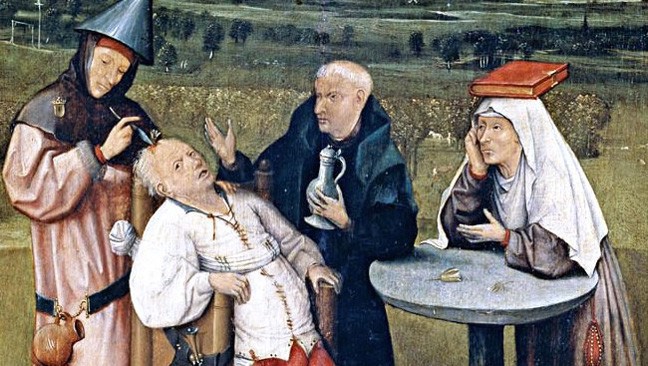Medical practices in the Middle Ages were making some progress but were still a far cry from what people today would want to experience. Some of the medicines and mixtures used did work and are still in use today. One concoction might even prove to be the answer to MRSA and other bacteria that is resistant to antibiotics.
Leeches are currently approved by the FDA for use in treating blood pooling under the skin. But a few successes does not mean that there was not a whole lot of bad and quite a bit of weird in medieval medical practices.
Jar of Farts
One medieval medical practice that was not painful but also not very successful was the use of a jar of farts. A belief at the time was that disease, namely the black death, was caused by deadly vapors. Breathing in those vapors were what spread the disease or make the disease worse. To that end physicians theorized ways to keep people from inhaling those deadly vapors.

So then came the idea of farts in a jar. Physicians told their patients to fart in a jar or capture the farts of others and keep them sealed in the jar. Then whenever a sickness like the black plague came through town they were supposed to open the jars and take deep breaths.
This wasn’t the only way that physicians tried to halt the deadly plague. Since they believed that the plague was spread by vapors, physicians would wear masks stuffed with garlic when visiting patients. This would prevent them from smelling the deadly vapors and thereby catching the plague. The mask was effective, the garlic less so.
While the jars were ineffective in curing or stopping the spread of the disease but it may have earned the name “therapeutic stink.” It may not have done anything medically but it might have given hope to those living in fear of the deadly plague that they might survive it. 30 to 60 percent of the population of Europe perished between 1348 and 1350 due to the plague, so the fear was very real.

